Asteroid impacts on the Earth and moon have increased since the dinosaurs lived
(CNN)Over the last 290 million years, asteroid collisions with Earth and the moon have increased as many as three times, according to a new study published Thursday in the journal Science. And while that sounds like a long timescale, this is a significant increase compared to the previous 700 million years.
So why is this a big deal -- apart from asteroids hurtling through space and colliding with our planet? The new findings are changing the way we look back on Earth's history.
For decades, scientists have been trying to determine the rate that asteroids impact Earth. They studied impact craters on Earth and the age of the rocks around them. But that method came with its own roadblocks. The biggest issue: The earliest impact craters were missing.
Before this study, scientists believed they couldn't find the oldest impact craters on Earth because erosion or other geological processes wiped them from the surface. And compared to other planets in the solar system, Earth has fewer older impact craters than expected.
So they decided to study the moon instead, a perfect analog for Earth, crater-wise, because both were hit similarly over time. Craters are also more well-preserved on the moon because it doesn't undergo the same disruptive processes that Earth does.
"The only obstacle to doing this has been finding an accurate way to date large craters on the Moon," William Bottke, study co-author and asteroid expert at the Southwest Research Institute, said in a statement.
NASA's Lunar Reconnaissance Orbiter, which began its mission around the moon a decade ago, gathered thermal data and images that the researchers were able to use. Thermal data showed how much heat was radiating off of the lunar surface. Larger rocks give off more heat than regolith, or the fine soil on the surface.
Rebecca Ghent, study co-author and planetary scientist at the University of Toronto, determined the rate at which rocks break down into soil. She also discovered that older craters are covered by fewer boulders and rocks than younger craters. This is because tiny meteorites hitting the moon help to grind down the boulders over time.
What they discovered is that the earliest craters on the Earth aren't missing -- they don't exist. And they don't exist on the moon either.
"This means that the Earth has fewer older craters on its most stable regions not because of erosion, but because the impact rate was lower prior to 290 million years ago," Bottke said. "The Moon is like a time capsule, helping us understand the Earth. We found that the Moon shared a similar bombardment history, which meant the answer to Earth's impact rate was staring everyone right in the face."
The finding was so surprising that they wanted more evidence for confirmation.
The answer lay with kimberlite pipes. These pipes are actually long-extinct volcanoes and they stretch more than a mile below the Earth's surface in a carrot shape. The pipes are largely mined for diamonds and found in the least eroded parts of Earth. This is also where preserved impact craters are found.
Tom Gernon, study co-author and Earth scientist at the University of Southampton, found that kimberlite pipes formed in the last 650 million years on stable terrain. This means that the impact craters found in the same area are also intact.
"Our research provides evidence for a dramatic change in the rate of asteroid impacts on both Earth and the Moon that occurred around the end of the Paleozoic era," said Sara Mazrouei in a statement, lead study author and planetary scientist. "The implication is that since that time we have been in a period of relatively high rate of asteroid impacts that is 2.6 times higher than it was prior to 290 million years ago."
Their method of studying kimberlite pipes and impact craters may be applicable outside of Earth studies in the future.
"We can now apply this technique to study the surfaces of other planets to find out if they might also show more impacts," Bottke said. "Our findings also have implications for the history of life, which is punctuated by extinction events and rapid evolution of new species. Though the forces driving these events are complicated, asteroid impacts have surely played a role in this ongoing saga."
The change in the rate of asteroids colliding with the Earth and moon may be due to the large collisions that were happening in the main asteroid belt. The belt lies between Mars and Jupiter, and this area was highly active 300 million years ago. That would have created a stream of debris that would enter the inner solar system.
And the uptick in asteroid collisions happened alongside the age of the dinosaurs.
"[Dinosaurs] as a species were particularly vulnerable to large impacts from the get-go, more so than earlier animal groups," Gernon said. "It's perhaps fair to say it was a date with destiny for the dinosaurs -- their downfall was somewhat inevitable given the surge of large space rocks colliding with Earth."



















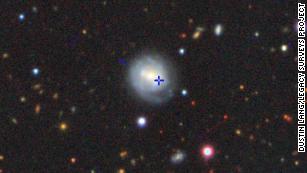
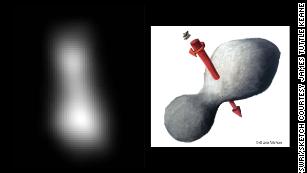
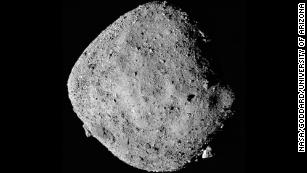
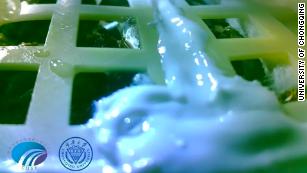
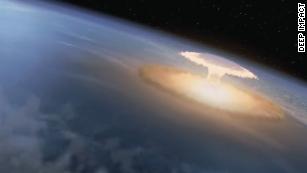
No comments:
Post a Comment